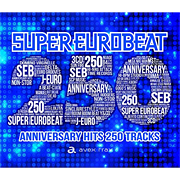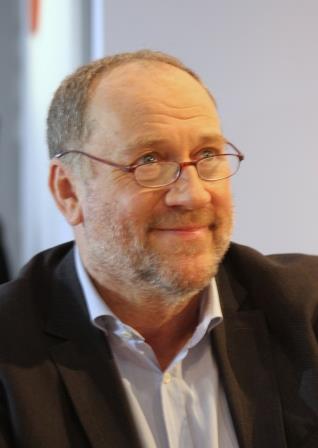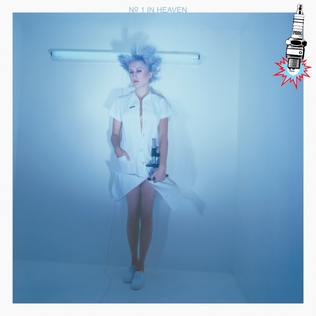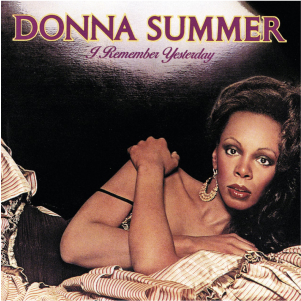Related Research Articles

Disco is a genre of dance music and a subculture that emerged in the 1970s from the United States' urban nightlife scene. Its sound is typified by four-on-the-floor beats, syncopated basslines, string sections, brass and horns, electric piano, synthesizers, and electric rhythm guitars.
House is a genre of electronic dance music characterized by a repetitive four-on-the-floor beat and a typical tempo of 120-130 beats per minute as a re-emergence of 1970s disco. It was created by DJs and music producers from Chicago's underground club culture and evolved slowly in the early/mid 1980s as DJs began altering disco songs to give them a more mechanical beat. By early 1988, House became mainstream and supplanted the typical 80s music beat.
Synth-pop is a music genre that first became prominent in the late 1970s and features the synthesizer as the dominant musical instrument. It was prefigured in the 1960s and early 1970s by the use of synthesizers in progressive rock, electronic, art rock, disco, and particularly the Krautrock of bands like Kraftwerk. It arose as a distinct genre in Japan and the United Kingdom in the post-punk era as part of the new wave movement of the late 1970s.
Europop is a style of pop music that originated in Europe during the mid-to-late 1960s and developed to today's form throughout the late 1970s. Europop topped the charts throughout the 1980s and 1990s, with revivals and moderate degrees of appreciation in the 2000s.

Giovanni Giorgio Moroder is an Italian composer and music producer. Dubbed the "Father of Disco", Moroder is credited with pioneering euro disco and electronic dance music. His work with synthesizers had a large influence on several music genres such as hi-NRG, Italo disco, synth-pop, new wave, house and techno music.
Hi-NRG is a genre of uptempo disco or electronic dance music (EDM) that originated in the United States during the late 1970s and early 1980s.
Dance-pop is a subgenre of pop music that originated in the late 1970s to early 1980s. It is generally uptempo music intended for nightclubs with the intention of being danceable but also suitable for contemporary hit radio. Developing from a combination of dance and pop with influences of disco, post-disco and synth-pop, it is generally characterised by strong beats with easy, uncomplicated song structures which are generally more similar to pop music than the more free-form dance genre, with an emphasis on melody as well as catchy tunes. The genre, on the whole, tends to be producer-driven, despite some notable exceptions.
Eurodance is a genre of electronic dance music that originated in the late 1980s in Europe. It combines many elements of rap, techno and Eurodisco. This genre of music is heavily influenced by the use of rich vocals, sometimes with rapped verses. This, combined with cutting-edge synthesizers, strong bass rhythm and melodic hooks, establishes the core foundation of Eurodance music.

Eurobeat refers to two styles of dance music that originated in Europe: one is a British variant of Italian Eurodisco-influenced dance-pop, and the other is a hi-NRG-driven form of Italo disco. Both forms were developed in the 1980s.
Italo disco is a music genre which originated in Italy in the late 1970s and was mainly produced in the 1980s. Italo disco evolved from the then-current underground dance, pop, and electronic music, both domestic and foreign and developed into a diverse genre. The genre employs electronic drums, drum machines, synthesizers, and occasionally vocoders. It is usually sung in English, and to a lesser extent in Italian and Spanish.

Hans Hugo Harold Faltermeyer is a German musician, composer and record producer.

Love to Love You Baby is the second studio album by American singer Donna Summer, released on August 27, 1975, and her first to be released internationally and in the United States. Her previous album Lady of the Night (1974) was released only in the Netherlands. The album was commercially successful, mainly because of the success of its title track, which reached number 2 on the US Pop charts despite some radio stations choosing not to play the song due to its sexually explicit nature.

"I Feel Love" is a song by the American singer Donna Summer. Produced and co-written by Giorgio Moroder and Pete Bellotte, it was recorded for Summer's fifth studio album, I Remember Yesterday (1977). The album concept was to have each track evoke a different musical decade; for "I Feel Love", the team aimed to create a futuristic mood, employing a Moog synthesizer.

Nº 1 in Heaven is the eighth studio album by American rock band Sparks. Recorded with Italian disco producer Giorgio Moroder, the album marked a change of musical direction for the group and became influential on later synth-pop bands.

I Remember Yesterday is the fifth studio album by American singer-songwriter Donna Summer. It was released on May 13, 1977, seven months after the release of her previous album. Like her previous three albums, it was a concept album, this time seeing Summer combining the recent disco sound with various sounds of the past. I Remember Yesterday includes the singles "Can't We Just Sit Down ", "I Feel Love", the title track, "Love's Unkind" and "Back in Love Again". "I Feel Love" and "Love's Unkind" proved to be the album's most popular and enduring hits, the former of which came to be one of Summer's signature songs.

Dance music is music composed specifically to facilitate or accompany dancing. It can be either a whole piece or part of a larger musical arrangement. In terms of performance, the major categories are live dance music and recorded dance music. While there exist attestations of the combination of dance and music in ancient history, the earliest Western dance music that we can still reproduce with a degree of certainty are old-fashioned dances. In the Baroque period, the major dance styles were noble court dances. In the classical music era, the minuet was frequently used as a third movement, although in this context it would not accompany any dancing. The waltz also arose later in the classical era. Both remained part of the romantic music period, which also saw the rise of various other nationalistic dance forms like the barcarolle, mazurka, ecossaise, ballade and polonaise.

"Chase" is a 1978 instrumental composition by Italian music producer Giorgio Moroder. It was released as a single during 1978 from his Academy Award-winning soundtrack album Midnight Express (1978), and was a disco instrumental that was subsequently extended and released as a maxi single. It made the Billboard Hot 100 in January 1979, peaking at number 33, and the UK Singles Chart, peaking at number 48.
Techno is a genre of electronic dance music which is generally produced for use in a continuous DJ set, with tempos being in the range of 120 to 150 beats per minute (BPM). The central rhythm is typically in common time (4/4) and often characterized by a repetitive four on the floor beat. Artists may use electronic instruments such as drum machines, sequencers, and synthesizers, as well as digital audio workstations. Drum machines from the 1980s such as Roland's TR-808 and TR-909 are highly prized, and software emulations of such retro instruments are popular.
Electronic rock is a music genre that involves a combination of rock music and electronic music, featuring instruments typically found within both genres. It originates from the late 1960s when rock bands began incorporating electronic instrumentation into their music. Electronic rock acts usually fuse elements from other music styles, including punk rock, industrial rock, hip hop, techno and synth-pop, which has helped spur subgenres such as indietronica, dance-punk and electroclash.
References
- ↑ Horn, David; Shepherd, John (8 March 2012). Continuum Encyclopedia of Popular Music of the World Volume 8. Bloomsbury Publishing. ISBN 978-1-4411-4874-2 – via Google Books.
- ↑ Koskoff, Ellen (25 September 2017). The Garland Encyclopedia of World Music. Taylor & Francis. ISBN 9781351544146 – via Google Books.
- ↑ Peter Shapiro (23 June 2015). Turn the Beat Around: The Secret History of Disco . Macmillan + ORM. ISBN 978-1-4668-9412-9.
The following year, the flip, "Baby Come Back," becomes a huge hit across Europe, setting in motion Europop and soon Eurodisco.
- ↑ Electronica, Dance and Club Music. Routledge. 5 July 2017. ISBN 978-1-351-56854-8 . Retrieved May 31, 2024.
... eurodisco emerged in the mid - 70s and revolved around a simplifica- tion of early disco's polyrhythmic percussion , which it reduced to a pound- ing bass beat ...
- ↑ Wodtke, Larissa (6 April 2023). Dance-Punk. Bloomsbury Publishing. ISBN 9781501381874 – via Google Books.
... instead of coming from Eurodisco strongholds in Germany, Italy, or France, the best imports right now are from England...
- ↑ Kuligowski, Waldemar; Poprawski, Marcin (27 November 2023). Festivals and Values Music, Community Engagement and Organisational Symbolism. Springer International Publishing. ISBN 9783031397523 – via Google Books.
disco polo , a musical genre combining influences from Italian and German eurodisco and Belarusian , Ukrainian and Balkan folk melodies , with kitsch lyrics mainly about ( heterosexual ) love ( Socha 2020 ).
- ↑ Ellis, Iain (29 October 2008). Rebels Wit Attitude Subversive Rock Humorists. Soft Skull Press. ISBN 9781593763350 – via Google Books.
... Fischerspooner and Chilly Gonzales have also embraced the "electroclash" style-a camp mutation of Euro-disco and new wave-as the vehicle for their own campaigns of identity fluidity...
- ↑ Morley, David; Ang, Ien (3 August 2005). Cultural Studies. Taylor & Francis. ISBN 9781134957927 – via Google Books.
Eurorecords had to have immediate cross-national appeal, musical simplicity was of the essence- a bouncy beat, just one chorus hook, elementary lyrics. The fun of these records was entirely a matter of sound quality, but once a record was a hit it took on a kind of sleazy, nostalgic charm of its own. It was precisely the brazen utility of these records, in short, that gave them gay disco consumer appeal too.[...] Eurodisco also had an obvious element of camp -British club audiences took delight in the very gap between the grand gestures of Eurosingers and the vacuity of their songs.
- ↑ Bogdanov, Vladimir; Woodstra, Chris; Bush, John; Erlewine, Stephen Thomas (2001). All Music Guide to Electronica: The Definitive Guide to Electronic Music. Backbeat Books. ISBN 978-0-87930-628-1 . Retrieved May 31, 2024.
- ↑ Le Menestrel, Sara (2007). "The Color of Music: Social Boundaries and Stereotypes in Southwest Louisiana French Music". Southern Cultures. 13 (3): 87–105. ISSN 1068-8218. JSTOR 26391066.
- ↑ Hasselhoff, David; Thompson, Peter (15 May 2007). Don't Hassel the Hoff The Autobiography. St. Martin's Press. ISBN 9781429901062 – via Google Books.
Simon invited me to work with Stock, Aitken and Waterman, Britain's biggest hit-makers of the 1980s whose work favoured a high-spirited blend of pop music and Hi-NRG, a high-tech version of Euro-disco. I checked into the Piccadilly Hotel
- ↑ Schütte, Uwe (11 January 2017). German Pop Music A Companion. De Gruyter. ISBN 9783110423549 – via Google Books.
Like Frankfurt, Munich also had a (more indirect) house and techno pre-history via the Eurodisco sound associated with Giorgio Moroder.
- ↑ Decentring Dancing Texts The Challenge of Interpreting Dances. Palgrave Macmillan UK. 24 July 2008. ISBN 9780230584426 – via Google Books.
- ↑ Borthwick, Stuart; Moy, Ron (15 April 2020). Popular Music Genres: an Introduction. Routledge. ISBN 978-0-7486-1745-6 – via Google Books.
- ↑ "How Synthwave Grew from a Niche '80s Throwback to a Current Phenomenon". Popmatters. 25 November 2019. Retrieved May 31, 2024.
- ↑ Schütte, Uwe (11 January 2017). German Pop Music A Companion. De Gruyter. ISBN 9783110423549 – via Google Books.
Like Frankfurt, Munich also had a (more indirect) house and techno pre-history via the Eurodisco sound associated with Giorgio Moroder.
- ↑ Evans, Mike (4 October 2018). 30-Second Rock Music - The 50 Key Styles, Artists and Happenings Each Explained in Half a Minute. Ivy Press. ISBN 9781782405542 – via Google Books.
'Euro Disco', an electronic music style popularized by producers like Giorgio Moroder.
- ↑ Ellen Koskoff, Ellen (25 September 2017). The Garland Encyclopedia of World Music The United States and Canada · Volume 3. Taylor & Francis. ISBN 9781351544146 – via Google Books.
Rhythm and blues disco was joined by Eurodisco, a style from the continent that relied largely on synthesized instrumentation and effects. Lacking the footing in the rhythm and blues idioms that carried American disco, Eurodisco sounded more purely electronic, often more futuristic. Some tunes
- ↑ Reynolds, Simon (24 May 2011). Bring the Noise 20 Years of Writing About Hip Rock and Hip Hop. Soft Skull Press. ISBN 9781593764609 – via Google Books.
The 'funkless' accusation is pretty incontestable. It goes back to Giorgio Moroder, whose productions for Donna Summer pioneered the first all-electronic dance music: Eurodisco.
- ↑ Christopher, David (1999). British Culture An Introduction. Routledge. ISBN 9780415220538 – via Google Books.
Around 1977 the German producer Giorgio Moroder popularised an infectious, rhythmical, electronic dance music (later known as 'Euro disco') through the music of the American vocalist Donna Summer.
- ↑ Napier-Bell, Simon. The Business - A History of Popular Music from Sheet Music to Streaming. Unbound. ISBN 9781800182547.
- ↑ Sturman, Janet Lynn, ed. (2019). The SAGE international encyclopedia of music and culture. Thousand Oaks, California: SAGE Publications. ISBN 978-1-4833-1775-5. OCLC 1063747665.
- 1 2 3 Jeffery, Alex (6 May 2021). Donna Summer's Once Upon a Time. Bloomsbury Publishing. ISBN 9781501355486.
- 1 2 Sanneh, Kelefa (2021). Major labels: a history of popular music in seven genres. New York: Penguin Press. ISBN 978-0-525-55959-7.
- ↑ Ahlers, Michael; Jacke, Christoph, eds. (2017). Perspectives on German popular music. Ashgate popular and folk music series. New York: Routledge. ISBN 978-1-4724-7962-4.
- ↑ David Bowie Made Me Gay: 100 Years of LGBT Music. 2017. Retrieved 29 August 2023.
The influence of Eurodisco was soon felt in America, where Moroder provided Blondie with their biggest US chart hit ('Call Me'), and Laura Brannigan would also hit Number One with a cover of the Italian pop hit 'Gloria'.